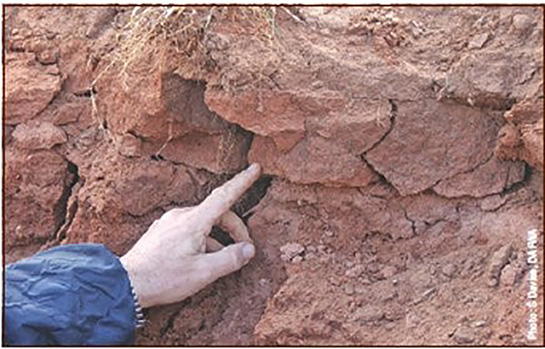A fact sheet to support the Soil CRC’s ‘Soil compaction – identification and management’ webinar, delivered as part of our ‘Building technical capacity for improved soil management’ webinar series.
In this webinar, Murdoch University Professor, Dr Richard Bell, shares information about the causes, effects, and a variety of management options for amending compacted soil in agricultural landscapes; answering questions along the way.
Management implications
Soils susceptible to soil compaction and soil pan formation are widespread throughout the south-west of Western Australia. Soil compaction restricts root growth, water infiltration, nutrient availability, and biological function, and increases harmful pathogens. In south-west Western Australia alone, soil compaction is responsible for an annual agricultural production loss of $333 million.
In specific situations and environments, compacted subsoils can be ameliorated by deep ripping, soil inversion ploughing and spading. Further compaction can be minimised with controlled traffic farming and the use of gypsum on suitable soils to stabilise aggregation.
Retention or build-up of soil organic matter plays an important role in maintaining soil structure.
Stock movement and grazing on wet soils needs to be restricted to reduce compaction.
Soil structure and its influence
The soil structure, comprising sand, silt, and clay particles, significantly affects the soil’s pore size distribution. Macropores allow air penetration and root growth, while micropores store water. Soil structure results from the reorganisation of sand, silt, and clay into secondary particles or peds.
Sandy soils in Western Australia lack well-formed structures, unlike some well-structured tropical and eastern Australian soils. Different ped types include crumb, columnar, prismatic, angular, and platy. Peds form when sand, clay, organic matter, and polyvalent cations (e.g. calcium, aluminium) chemically bind together.
Some soils under native vegetation can be quite hard, with very dense subsoils. Compaction can reduce the depth that roots can penetrate, affecting water and nutrient access, and consequently, crop yield.
Wetting and drying, freezing and thawing, and tillage all impact soil structure.
Roots and soil structure
Roots also contribute to soil structure formation by exerting pressure and releasing organic compounds. Roots are delicate biological structures that require pores with similar diameter as the tip of the root to grow into the soil. Without enough macropores, roots struggle to penetrate the soil. In some soils with dense B horizons, roots tend to grow through old root channels, which may still exist from the previous native vegetation.
Soil bulk density data, collected with a core, can reveal problematic levels affecting root growth. The problematic values vary with texture. For example >1.65 in sand and >1.85 in clay loam are levels of bulk density that indicate compaction. Penetration resistance using a penetrometer can measure soil compaction (values above 2 indicate significant root impact), but moisture levels should be considered, and a soil profile can be used to diagnose soil structure and compacted layers. Soil structure plays a crucial role in improving plant available water.
Ongoing monitoring
Compaction and water repellency can have significant impacts on soil health and crop productivity. Monitoring soil conditions and adopting best management practices, including building and retaining organic matter, are essential to mitigate these stressors and support microbial activity and overall soil functionality.

Source: Soil Quality: 6 Soil Compaction eBook (SoilsWest)
Related Soil CRC projects
- Project 3.3.001 Mapping projects on ameliorating soil constraints, and review of soil constraints, products and technologies
- Project 4.2.002 Addressing complex soil constraints
- Project 4.2.006 Capitalising on established field trials for ameliorating (sub)soil constraints
- Project 4.3.006 Optimising soil constraint management through computer-based learning and modelling
Further information
- Soil Quality: 6 Soil Compaction (SoilsWest) – available on Apple Books
- Subsurface compaction: a guide for WA farmers and consultants (DPIRD, WA)
- Controlled Traffic Farming Technical Manual (NACC)
- Developing a controlled traffic (tramline) farming system (DPIRP, WA)
Acknowledgement
This webinar was recorded in 2020 as part of the ‘Building technical capacity for improved soil management’ webinar series. It was produced by the Soil CRC and jointly funded through the Australian Government’s National Landcare Program.
Posted Apr 18, 2024

